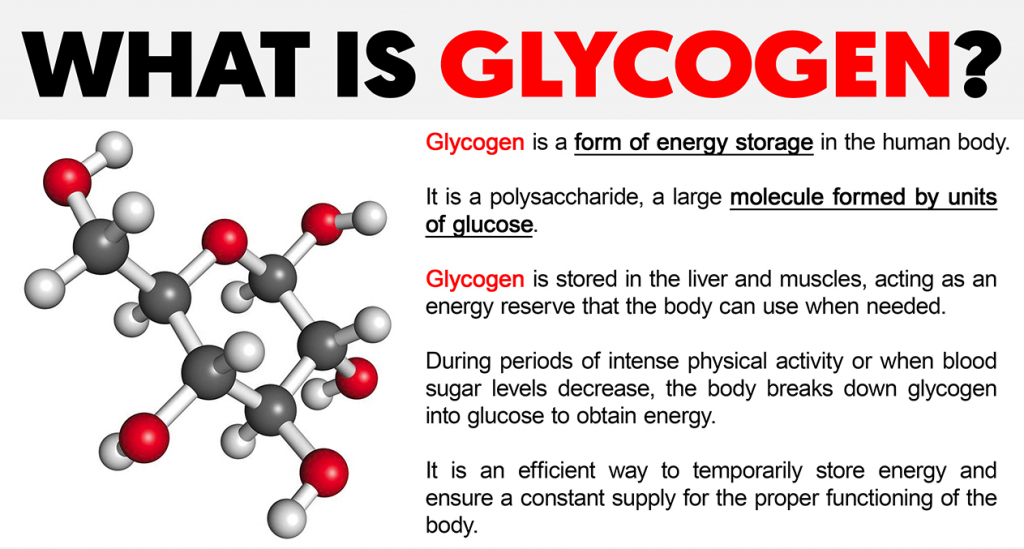What is Glycogen?
Think of glycogen as your body’s emergency snack pack. It’s a form of stored sugar (glucose) that hangs out in your liver and muscles, ready to jump in when you need energy fast. Whether you’re sprinting to catch the bus or just powering through a lazy day, glycogen’s got your back. It’s not the only energy reserve—body fat plays that game too—but glycogen is the speedy one, perfect for quick bursts.
Where It Lives and Why It Matters
Your liver and muscles are the VIP spots for glycogen. In a typical 70 kg adult, the liver holds about 100-120 grams (5-6% of its weight), while muscles pack around 400 grams (1-2% of their mass). Smaller amounts chill in places like your kidneys, blood cells, and even your brain’s support crew (glial cells). During pregnancy, the uterus stocks up too, feeding the growing baby.
Why’s this stash important? Your blood always has about 4 grams of glucose floating around. When you’re fasting—say, skipping breakfast—glycogen steps up, breaking down to keep that blood sugar steady. Muscles use their glycogen for themselves, but when they do, it actually frees up more blood sugar for other parts of your body, like your brain, which hogs about 60% of it when you’re resting.
How It Works
Glycogen is like a sugar savings account. Your body makes it from the glucose you eat—think carbs like bread or pasta—and stores it for later. When you’re low on energy, it breaks glycogen back into glucose. The liver’s stash is for the whole body, especially your brain, while muscle glycogen is more selfish, fueling your workouts. How much you’ve got depends on how active you are, what you eat, and how fast your metabolism runs.
It’s built like starch (the plant version of energy storage) but is more tangled and compact—perfect for quick access. In your cells, it sits in tiny granules, ready to roll when you need a sugar hit.

Glycogen vs. Fat: The Energy Showdown
Glycogen and fat are your body’s two big energy players. Fat’s the long-haul champ, packing more energy per gram but taking longer to tap into. Glycogen? It’s the sprinter—less dense, but it delivers glucose fast when you’re in a pinch, like during a tough gym sesh or a sudden dash. Even some parasites use it as a mini fuel tank!
Comprehensive Analysis on Glycogen
Glycogen is a powerhouse in your body’s energy game, and understanding it can level up how you think about food, fitness, and feeling good. Let’s dive into what it is, how it works, and why it’s a big deal—without drowning you in science speak.
What’s the Deal with Glycogen?
Glycogen is a multibranched sugar molecule—basically a bunch of glucose stuck together—that your body stashes away for energy emergencies. Animals, fungi, and bacteria all use it, but for us humans, it’s a key player in keeping us going. It’s like the starch in plants (think potatoes), just more twisted and compact, making it a speedy energy source.
In your body, it’s mostly parked in your liver and skeletal muscles. The liver holds about 100-120 grams in a 70 kg adult, while muscles hoard around 400 grams. Tiny bits also pop up in your kidneys, blood cells, brain’s glial cells, and the uterus during pregnancy. It’s stored as little granules in your cells, ready to break down into glucose when you need it.
How It Fuels You
Your blood keeps a steady 4 grams of glucose circulating—enough to keep things humming. When you haven’t eaten (like overnight), glycogen in your liver and muscles breaks down to maintain that level. The liver’s stash is a team player, sending glucose everywhere—especially to your brain, which slurps up 60% of it when you’re just chilling. Muscle glycogen, though, is more of a solo act—it powers your biceps during a lift but also helps by not hogging blood sugar, leaving more for other tissues.
How much glycogen you’ve got depends on a few things: how much you move, what you eat, and your metabolism. Train hard and eat carbs? Your stores grow. Slack off or skip meals? They shrink.
Glycogen in Action
Picture this: you’re fasting, and your blood sugar dips. Your liver kicks in, cracking open its glycogen vault to keep you steady. Hit the gym, and your muscles tap their own reserves for that extra rep. It’s quick—faster than digging into fat stores, which take more time to convert. That’s why glycogen’s perfect for sudden energy needs, while fat’s your slow-burn backup.
It’s not just humans—some parasites use glycogen too, proving it’s a universal energy hack. During pregnancy, the uterus even stockpiles it to feed the embryo, showing how versatile this stuff is.
Make It Work for You
Want to keep your glycogen game strong? Here’s how:
- Eat Carbs: Pasta, rice, fruit—load up to refill your stores.
Move It: Regular workouts (especially tough ones) boost how much you can hold.
Rest Up: Fasting or overdoing it drains the tank—balance is key.
Next time you’re powering through a day or crushing a set, thank glycogen—it’s your secret energy stash, keeping you in the game.
